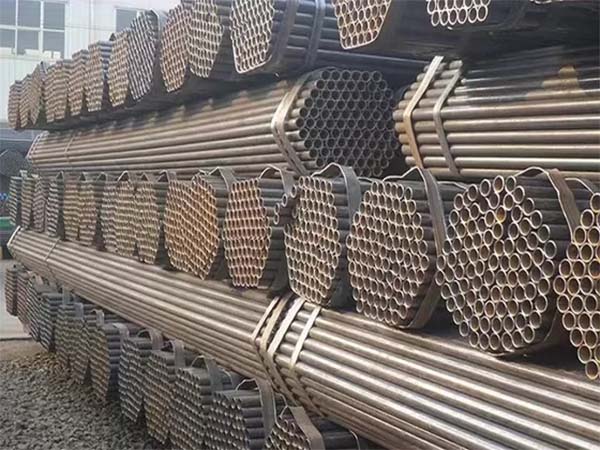ERW carbon steel pipe is the abbreviation of resistance welded carbon steel pipe. It features efficient welding, uniform wall thickness and excellent mechanical properties. It is widely applied in fields such as oil and gas pipelines, chemical equipment, building structures and water vapor transportation.
To ensure its safety and reliability under different working conditions, international and industry institutions have successively formulated a series of standards for its chemical composition, mechanical properties, dimensional tolerances and inspection and testing methods, such as ASTM A53, API 5L, EN 10217 and ISO 3183, etc. Together, they have established a full-process quality assurance system for ERW carbon steel pipes from material selection, manufacturing to acceptance.

Common standards and application fields of ERW carbon steel pipes
ASTM A53 (Type E/B) : The most common ERW tube standard, used for steam, water, gas and structural applications. It mainly includes two levels (A/B), Type E indicates resistance welding, and the strength of Grade B is higher than that of Grade A.
API 5L (PSL1/PSL2, Grade B, X42 - X70) : for oil and gas pipelines, specifies chemical composition, mechanical properties, inspection tests.
ASTM A178: high requirements for wall thickness and welding quality for boiler tubes and heat exchangers.
ASTM A500/A501: standard for square/rectangular tubes for structural purposes, Grade A - D, applicable to Bridges and building structures.
ASTM A252: Load-bearing pile pipe, used for supporting structures.
ASTM A672: resistance welded pipe for high voltage equipment, suitable for medium and high temperature conditions.
ASTM A691: high temperature and high pressure service piping, with added welding filler metal.
ASTM A513/A135: round tubes for machinery/structure, commonly used in furniture, fences, automobiles, etc.
EN 10217-1 / EN 10219-1: EU standard for pressure pipes and structural pipes, applicable to welded carbon steel or carbon manganese steel.
ISO 3183: The international standard for oil and gas pipelines is also applicable to conduits.
What are the chemical compositions of ERW carbon steel pipes?
The chemical composition of ERW carbon steel pipes mainly includes carbon, manganese, phosphorus, sulfur, etc. Other elements can also be added to enhance the overall performance of the pipes. Among them, API 5L and ASTM A53 set standards for the contents of carbon, manganese, phosphorus, sulfur, etc. in steel pipes. Elements such as chromium and nickel can be added to ASTM A513 to enhance the performance of pipes.
Dimensions and processing requirements
Size range: from ½ "(≈21 mm) to up to 24" (≈600 mm) in diameter. Wall thickness can be selected according to Schedule or special requirements.
End treatment methods: Common cutting, chamfering, threading and other forms, which are conducive to the subsequent connection of valves or pipes.
Surface treatment: Common surface treatment methods include black pipe, electroplating, hot-dip galvanizing, anti-corrosion coatings (coal tar pitch, epoxy asphalt, 3PE/PP), and other different anti-corrosion methods.
Commonly used inspection tests
Chemical analysis and mechanical property testing: including yield strength, tensile strength, elongation, etc.
Technical performance testing: such as flattening test, bending test, hardness impact test, etc.
Non-destructive testing (NDT) : Common methods include ET (eddy current), RT (radiographic), and UT (ultrasonic) testing.
Hydrotest: It can effectively ensure the sealing performance and pressure-bearing capacity of the pipeline.
CENTRAL STEEL can produce various standard ERW carbon steel pipes. Our production line is equipped with advanced equipment such as non-destructive testing (NDT), hydrostatic testing, and heat treatment. The products can be inspected by internationally renowned third-party testing institutions such as SGS, BV, and TuV to ensure that customers receive satisfactory products and services.
